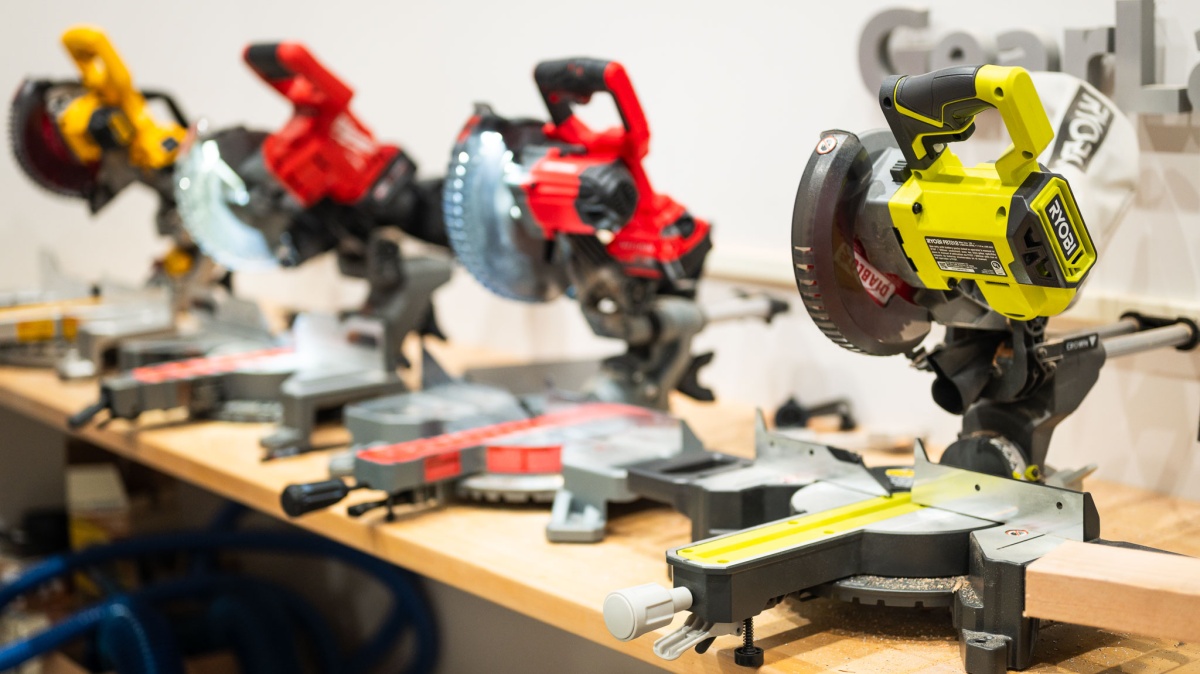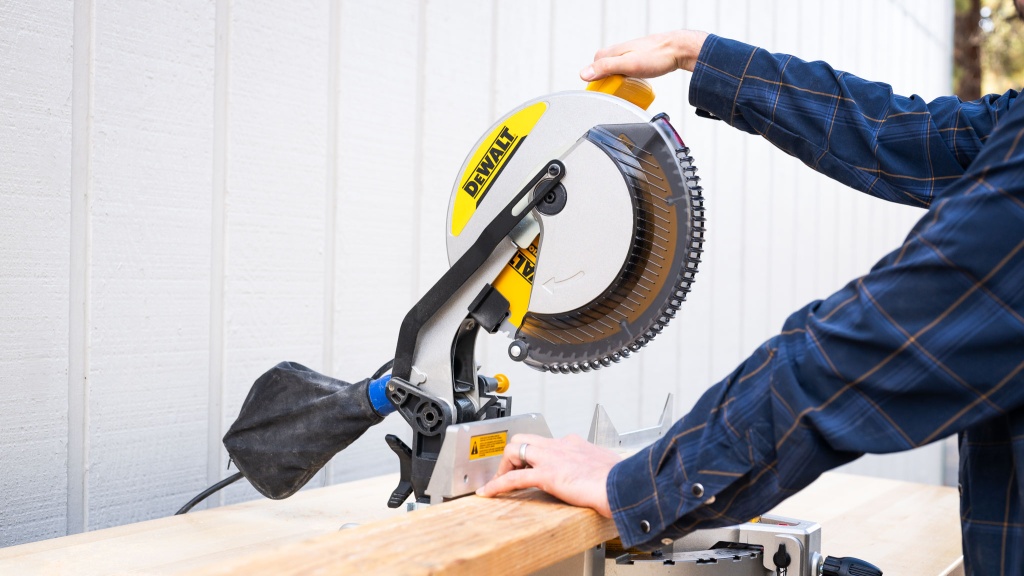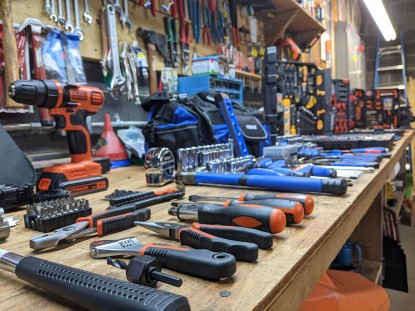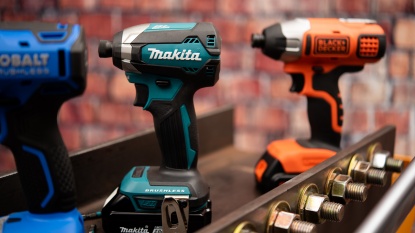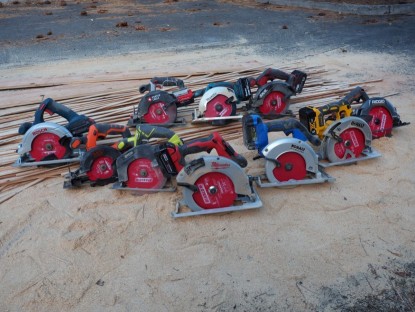Miter saws are specialized tools designed for making precise crosscuts and miter cuts in a workpiece at various angles. They exist to provide woodworkers, carpenters, and DIY enthusiasts with the ability to create angular cuts with accuracy and speed that other saws, like circular saws or hand saws, cannot match. Miter saws are essential for trimming, framing, and molding, where angled cuts are frequently required.
Why You Would Need a Miter Saw
Consider purchasing a miter saw if you engage in projects requiring repetitive straight or angled cuts with precision. While other categories of saws can perform similar tasks, miter saws are specifically designed for precision and ease of use for angled or square cuts.
Types of Miter Saws Available
Miter saws come in various configurations, each suited to different tasks. They can be battery-powered, lightweight, and portable, or have a larger footprint and weight of over 60 pounds but offer enough power to cut through the most challenging materials.
Single Bevel Miter Saws
These saws pivot on one axis and can make bevel cuts (an angled cut) in one direction. They are suitable for most basic tasks and are generally more affordable.
Double Bevel Miter Saws
Also known as dual bevel miter saws, these can pivot left and right to make bevel cuts in both directions without flipping the workpiece. This is ideal for more complex projects.
Compound Miter Saws
These saws can tilt in one direction (single compound) or both directions (dual compound) to make bevel and miter cuts. They are versatile and great for a variety of intricate woodworking tasks.
Sliding vs. Non-Sliding
Sliding miter saws have rails that allow the blade to move forward and backward, increasing the length of cut they can make. Non-sliding models are limited to the diameter of the blade but are typically lighter, more compact, and affordable.
Cordless vs. Battery-Powered
Cordless miter saws represent the frontier of convenience and mobility in woodworking. These battery-powered marvels liberate you from the tether of a power cord, allowing you to work in remote locations or navigate a busy workshop without the hassle of cable management. However, this freedom comes with trade-offs. Cordless models typically house less raw cutting power than their corded counterparts, and their performance hinges on battery life—requiring diligent charging and, ideally, spare batteries on hand to avoid downtime.
On the other side of the spectrum, corded miter saws often offer more power. With a constant connection to an electrical outlet, they're ready for extended use without worrying about a waning battery. This consistent power output often translates to more robust performance, particularly with challenging materials or prolonged work sessions. The trade-off is less mobility due to their dependence on proximity to power sources and often a larger footprint in your workspace due to the stationary design that accommodates their more powerful motors.
When choosing between cordless and corded miter saws, consider the nature of your projects. A cordless saw is invaluable if you frequently move around or work off-site where power is scarce. Conversely, if your work is stationary and demands sustained power, a corded saw is reliable.
The Best Miter Saw for You
Project Type
When selecting the right miter saw for your needs, it's crucial to consider the types of projects you'll be undertaking. For simple framing or molding, a basic non-sliding compound miter saw may suffice, providing the necessary functionality without additional complexities. However, if you're delving into complex woodworking that requires numerous bevel cuts, a dual-bevel sliding compound miter saw would be more appropriate, offering the flexibility and precision needed for intricate designs.
Portability
Portability is another significant factor in your decision-making process. If your work involves frequently moving between job sites, a cordless model or a lighter, non-sliding miter saw could be beneficial, granting you ease of transport without sacrificing performance. On the other hand, if your work is primarily stationary, a heavier sliding compound miter saw might be acceptable, as its weight and size are less of a concern.
Size of Material
The size of the material you will be cutting also dictates the type of miter saw you should consider. A sliding miter saw with a larger blade diameter will be necessary for larger materials to accommodate the increased breadth of cuts. Conversely, for smaller materials, a non-sliding miter saw might be adequate, offering precision without the need for the additional capacity that sliding models provide.
Type of Material
Selecting the ideal miter saw for your project hinges on the materials you'll be slicing through. Lightweight, low-density wood can be easily managed by a miter saw with moderate power, allowing for swift and effective cuts without the need for high torque or speed. Conversely, a more powerful saw is essential if your projects involve regularly tackling harder substances — think dense hardwoods, hefty composites, or even robust plastics and metals. Such materials demand a saw that can deliver clean, accurate cuts without overburdening the motor.
While lower-powered saws might technically make the cut through aluminum or softer metals when operated at an appropriate speed, they do so at the cost of increased wear on the motor. This might not concern the occasional DIY job, but it's a false economy for more frequent use or for slicing through more challenging materials. Over time, the extra strain could prematurely end your motor's life.
Therefore, it's crucial to consider not just the immediate job at hand but also future projects when choosing your miter saw. Opt for a model that not only matches the power requirements of the materials you're working with. This foresight will ensure consistent cut quality and a wise investment in your toolkit.
Conculsion
It is essential to emphasize not just the technical capabilities of a tool but also its alignment with your needs. The right miter saw is the one that not only fits your project requirements but also enhances your workflow efficiency. It's about finding a balance between features, functionality, and budget while keeping in mind the longevity and adaptability of the tool to future projects.
Remember, while it's tempting to go for the most advanced tool on the market, practicality should guide your decision. The best tool for you is one that you will use effectively, fits within your budget, and helps you achieve the level of precision your work demands. Whether you're a weekend warrior or a seasoned professional, taking the time to consider your options will lead you to the miter saw that best complements your craftsmanship. Check out our comprehensive review, where we put the top-ranked miter saws through our side-by-side testing conducted by experts.

